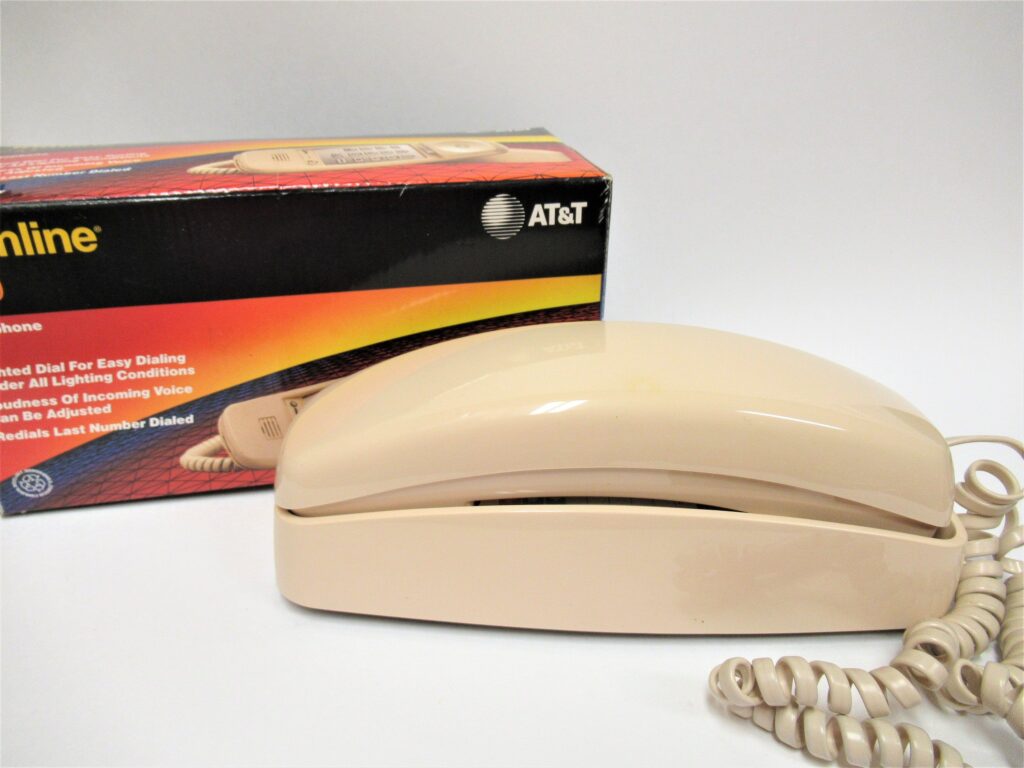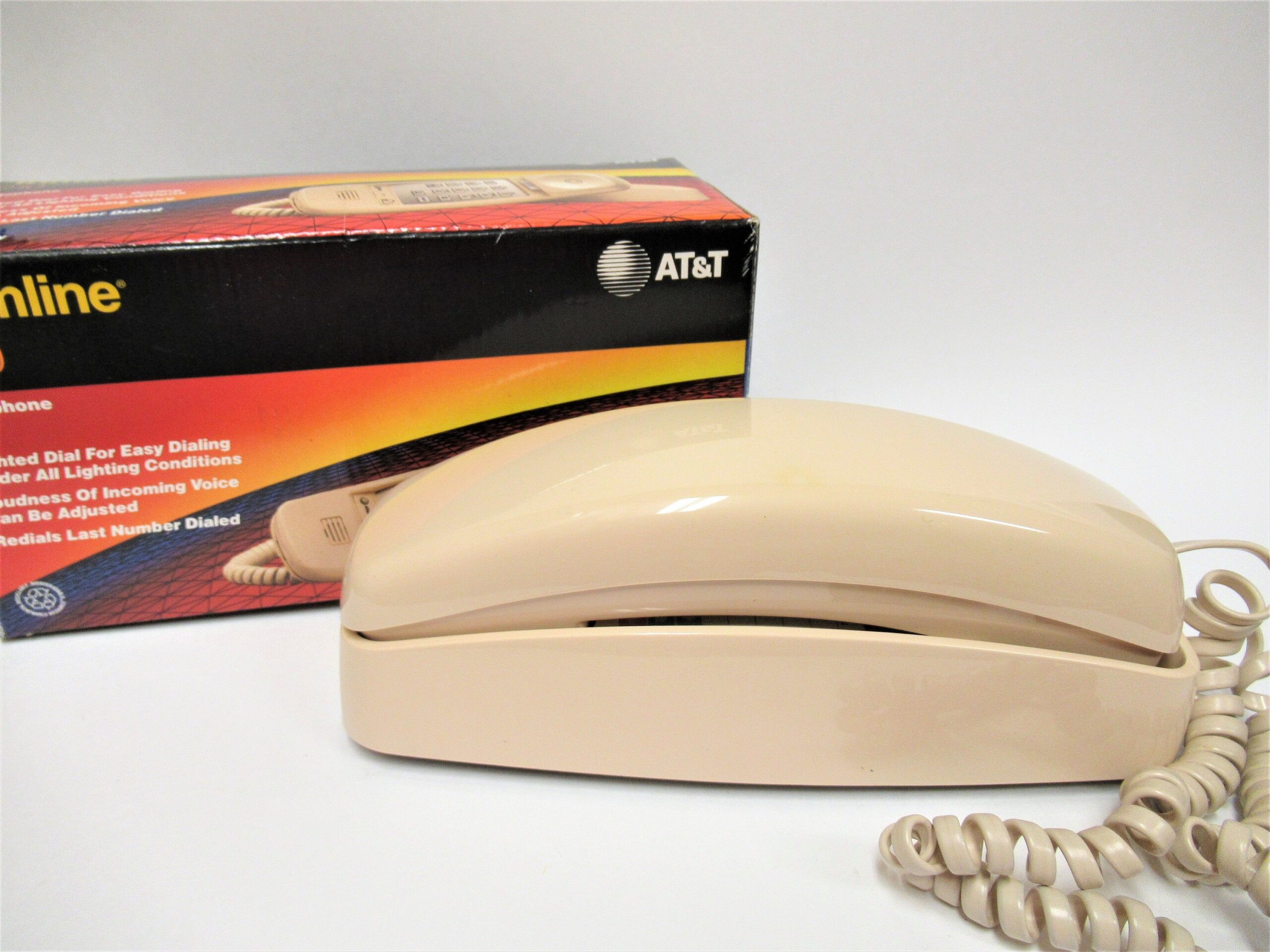
The Enduring Appeal of the Telephone Trimline: A Classic Design Icon
The telephone trimline, a household staple for decades, holds a unique place in the history of telecommunications and design. More than just a device for making calls, the telephone trimline represented a shift towards sleek, modern aesthetics and user-friendly technology. Its innovative design and widespread adoption cemented its status as a classic icon. This article explores the history, design, cultural impact, and enduring appeal of the telephone trimline.
A Brief History of the Telephone Trimline
Introduced by Western Electric in 1965, the telephone trimline was a significant departure from the bulky, rotary-dial phones that preceded it. The key innovation was integrating the dial into the handset, creating a slimmer, more streamlined profile. This design was a direct response to consumer demand for smaller, more aesthetically pleasing telephones.
The development of the telephone trimline was driven by advancements in miniaturization and materials science. Engineers were able to pack the necessary components into a smaller space, while new plastics allowed for lighter and more durable construction. The result was a phone that was both functional and visually appealing.
Design and Features of the Telephone Trimline
The defining feature of the telephone trimline was its handset-based dial. Instead of a rotary dial on the base, the dial was integrated into the handset itself. This made it easier to dial while holding the phone and reduced the overall footprint of the device. The dial typically featured push buttons, which were a more modern alternative to the traditional rotary dial.
Another key design element was the slim, elongated shape of the handset. The telephone trimline was designed to fit comfortably in the hand and to be easy to hold for extended periods. The base of the phone was also designed to be as small as possible, further contributing to its space-saving design.
The telephone trimline was available in a variety of colors, including classic shades like white, black, and ivory, as well as more vibrant options like red, blue, and green. This allowed consumers to choose a phone that matched their personal style and home decor.
Cultural Impact of the Telephone Trimline
The telephone trimline quickly became a symbol of modernity and sophistication. Its sleek design and user-friendly features made it a popular choice for homes and businesses alike. The phone appeared in countless movies, television shows, and advertisements, further solidifying its place in popular culture.
The telephone trimline also played a role in shaping the way people communicated. Its compact size and portability made it easier to move around while talking, allowing for more freedom and flexibility. The push-button dial also made dialing faster and more efficient, contributing to a more seamless communication experience.
The Telephone Trimline Today
While the telephone trimline is no longer a common sight in most homes, it remains a beloved design icon. Many people still cherish their vintage telephone trimline phones, using them as nostalgic reminders of a simpler time. The phone’s design has also inspired contemporary designers, who have incorporated its elements into new products and technologies.
The telephone trimline’s lasting legacy is a testament to its innovative design and cultural impact. It represents a pivotal moment in the history of telecommunications, when technology and aesthetics converged to create a product that was both functional and beautiful. Its enduring appeal ensures that the telephone trimline will continue to be remembered and celebrated for generations to come.
Collecting and Restoring Telephone Trimlines
For enthusiasts, collecting and restoring telephone trimline phones can be a rewarding hobby. Vintage models can be found at antique stores, flea markets, and online auction sites. Restoring a telephone trimline involves cleaning, repairing, and replacing any damaged parts. With a little effort, a vintage telephone trimline can be brought back to its former glory.
When collecting telephone trimline phones, it’s important to consider the condition of the phone, its color, and its rarity. Some colors and models are more valuable than others. It’s also important to check the phone’s functionality to ensure that it is in working order. [See also: Antique Telephone Restoration Tips]
The Future of Telephone Design
While the telephone trimline may seem like a relic of the past, its design principles continue to influence contemporary telephone design. The emphasis on sleekness, user-friendliness, and aesthetics can be seen in many modern smartphones and telecommunications devices. The telephone trimline paved the way for a new generation of telephones that are both functional and visually appealing.
The evolution of the telephone continues, with new technologies and designs constantly emerging. However, the telephone trimline’s legacy as a classic design icon remains secure. Its innovative design and cultural impact ensure that it will continue to be remembered and celebrated for years to come. The telephone trimline is more than just a phone; it’s a piece of history and a symbol of a bygone era.
Maintenance and Troubleshooting Your Telephone Trimline
Even a well-preserved telephone trimline might require occasional maintenance. Dust accumulation can affect sound quality and button responsiveness. Gently cleaning the handset and base with a soft, dry cloth is usually sufficient. For stubborn dirt, a slightly damp cloth (avoiding excessive moisture) can be used.
If your telephone trimline experiences issues like a weak dial tone or inability to connect calls, the problem might lie with the phone line itself or the phone’s internal components. Consult a qualified technician for repairs, especially if you are not familiar with electronics. Replacing the cord can sometimes resolve connectivity issues. [See also: Troubleshooting Common Telephone Problems]
The Telephone Trimline and its Place in Pop Culture
The telephone trimline frequently appeared in movies and television shows of the 1960s, 70s, and 80s, often serving as a visual shorthand for affluence and modern living. Its presence in these media cemented its status as a design icon. Think of characters in Mad Men using a telephone trimline – it immediately evokes a specific era and aesthetic.
Advertisements also played a significant role in popularizing the telephone trimline. Campaigns emphasized its sleek design, vibrant colors, and ease of use, appealing to a broad consumer base. The telephone trimline became synonymous with progress and innovation, further contributing to its widespread adoption.
The Ergonomics of the Telephone Trimline
While visually appealing, the telephone trimline’s ergonomics were a subject of debate. The handset’s slim profile, while contributing to its aesthetic appeal, could be less comfortable for extended conversations compared to bulkier handsets. The push-button dial, however, was generally considered an improvement over the rotary dial in terms of speed and ease of use.
The placement of the dial on the handset also presented a unique ergonomic challenge. Users had to hold the handset and dial simultaneously, which could be awkward for some. Despite these considerations, the telephone trimline remained a popular choice, demonstrating that design often trumps pure ergonomics for many consumers.
The Materials Used in the Telephone Trimline
The telephone trimline’s construction primarily involved durable plastics, chosen for their lightweight properties and ability to be molded into complex shapes. The use of plastic also allowed for a wide range of colors, contributing to the phone’s aesthetic appeal. The internal components were typically made of metal and electronic components, carefully miniaturized to fit within the slim handset.
The choice of materials was crucial to the telephone trimline’s success. The phone had to be durable enough to withstand daily use, lightweight enough to be comfortable to hold, and aesthetically pleasing enough to appeal to consumers. The materials used in the telephone trimline struck a balance between these competing requirements.

